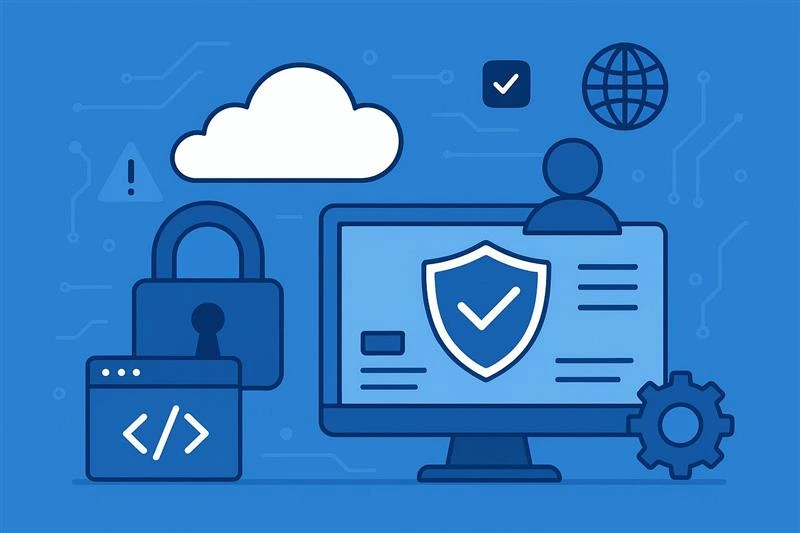Why Enterprise Software Matters?
Enterprise operations run best on dependable, scalable software. Trawlii builds custom systems that fit day-to-day operations, connect data across all departments, and scale effortlessly as demand rises. With one secure, integrated system in place, teams work faster, customers stay happier, and key numbers are always at hand for confident decisions—leaving more time to focus on expanding the business instead of managing technology.
Our Offerings
Custom Enterprise Application Development
Tailor-made software aligned with your unique business goals and workflows.
Legacy System Modernization
Revamp outdated systems with modern, scalable, and cloud-ready technologies.
Enterprise Mobility Solutions
Enable real-time access and seamless collaboration with mobile-first applications.
Software Integration Services
Connect your systems, tools, and data with powerful APIs and seamless integrations.
Data Analytics & BI
Make smarter business decisions with advanced reporting and data intelligence.
Maintenance & Support
Continuous monitoring, optimization, and technical support for long-term stability.
Benefits With Trawlii
Higher operational efficiency
Automates routine tasks and unifies workflows across the organization.
Greater workforce productivity
Frees staff to focus on high-value work instead of manual processes.
Improved customer experience
Delivers faster, more accurate, and more personalized service.
Data-driven decision-making
Consolidates information into real-time dashboards for clearer insights.
Lower costs
Reduces overhead through shared infrastructure and process automation.
Scalability and change readiness
Adapts quickly to growth, new markets, and evolving requirements.
E-commerce - Trawlii
Trawlii offers a free e-commerce store solution. Merchants, restaurateurs, and other service providers can create their websites and set up online stores using Trawlii in just one minute. You can upload and sell your product online.
View Case Study ↗
Why Choose Trawlii?
10+ Years of Industry Experience
Global Delivery Model
Proven Track Record Across Domains
Dedicated Team of Architects & Engineers
Client-Centric Approach
Scalable, Future-Proof Code
Frequently Asked Questions
From Code to Cloud: Fresh Perspectives from Our Experts

Cybersecurity Holiday Survival Guide for Small Businesses
The holiday season showers a lot of online shopping, orders, and digital transactions. For small and medium-sized enterprises (SMEs), the festive rush can be a source of increased revenue, but at the same time, it will incur a lot of cyber risk. The flow of more digital data through the systems poses a great risk, and the teams are often working very hard, so the cybercriminals consider this period as the perfect time to attack. For companies that depend on online sales, customer information, or remote collaboration — the risks are even greater. This guide will explain to you the reasons why holiday cybersecurity is more important than ever, the most common threats, and the actions your SME can take to be safe during the holiday peak. This guide will explain to you the reasons why holiday cybersecurity is more important than ever, the most common threats, and the actions your SME can take to stay safe by following cybersecurity best practices and proven holiday cybersecurity tips that strengthen small business cyber security and overall SME data protection.

Cybersecurity Best Practices for SMEs: From Code to Cloud
Cybersecurity Best Practices for SMEs: From Code to Cloud Running a small or mid-sized business today means handling more digital data than ever: from customer information and online transactions to internal systems in the cloud. As much as technology opens the gateway to growth, it exposes companies to cyber dangers that have previously been pertinent only to large enterprises. Many SMEs mistakenly believe that attackers will not find them worth the effort; in reality, precisely the opposite holds. Cybercriminals target smaller businesses because their defences are weaker compared to larger companies, making them easier to compromise.

Low‑Code vs Full‑Stack Development: What’s Right for Your Business in 2026?
In today's fast-paced digital world, businesses must continuously adapt to stay competitive-whether through launching new applications, automating internal processes, or enhancing customer experiences. Two prominent approaches that companies increasingly rely on to achieve these goals are low-code development and full-stack development. Low code relies on visual aids, drag and drop systems, etc, thus creating applications with minimal or no code. It enables the non-IT departments to shape the process of creating the apps and innovation. This, of course, means full-stack development has the implication of viewing the application at the very beginning: hence the front-end (UI) to the very end to back-end services (server, database, logic). It is appropriate to those companies, which have intricate features, scalability and have precise demands of their product. Nevertheless, full-stack applications are still regarded as the best ones when it comes to performance, flexibility, and customization. Meanwhile, the low-code platforms are popular now, particularly due to the potential of a faster delivery and lower prices.
Get In Touch
Whether you're looking to build a custom digital product, revamp your existing platform, or need expert IT consulting or you need support, our team is here to help.
Contact Information
Have a project in mind or just exploring your options? Let's talk!


